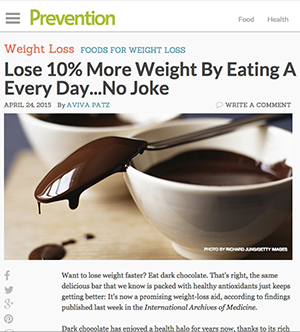The Official Sweetie of MR&HBI has been getting behind the camera quite a bit lately and is starting to get a feel for it. She knows, for instance, that when the f-stop is lower, the picture is brighter. She knows that the 85mm lens is zoomed in closer than the 12mm lens is. But why? What do the numbers actually mean?
It’s all about pinholes.
As a thought experiment, imagine poking a pencil through a piece of paper, then holding the paper up to your eye. When you hold the paper far from your eye, you can only see a little tiny bit of what is beyond. As you move the hole closer, you can see more. A “wider angle”, you might say. That distance from the hole to your eye corresponds to the focal length of the lens. A lens with a short focal length will show a wider angle of the world beyond it, while a long focal length will just show a tiny detail.
So far, so good. Perhaps the most mystifying number in photography is f-stop. I think the “stop” part of the term comes from the mechanics of early cameras, and doesn’t help matters. Let’s get back to the pinholes.
Let’s say your pinhole camera was built around a really, really big pin. In fact, let’s say your hole is a whole damn mile across. Obviously that’s going to let a lot of light through. You’ll overexpose your shot for sure!
Unless your mile-wide pinhole is 100 miles away. Suddenly that hole doesn’t seem so big, and the amount of light hitting your sensor is actually pretty small. In fact, your f-number is 100 – tiny tight. To get f-50 you could either double the diameter of the hole, or move the hole so it’s only 50 miles away. Either way, four times as much light will reach your sensor – the apparent diameter of the hole is doubled, but the amount of light is a function of the area of the circle. The f-number is a simple ratio, aperture/distance, and each integer you go down quadruples the amount of light that reaches the sensor.
A more reasonable pinhole camera would be a 0.3mm aperture at 50mm distance, or f-166. Light is slowly leaking through. To take a picture with a pinhole, you have to be ready to wait for a while.
Knowing where those numbers come from, we can appreciate the glass in our lenses all the more. Here at Muddled Central we have in our stable several (well, four) lenses that can go to f-numbers 2 or below. To accomplish that with a pinhole camera is simply preposterous. A “pinhole” 25mm across, mounted 50mm from the camera just wouldn’t work. Imagine holding a card with a hole the size of a quarter two inches from a white piece of paper. Do you see an image? You do not. But with glass we can make a lens that acts as if it were a 25mm pinhole 50mm from the sensor, and that’s pretty damn awesome.
Similarly, we can create lenses that don’t physically change in length, at lest not all that much, but with a twist of a ring act as if they could be stretched from, say, 24 to 105mm, the way my favorite Swiss-knife lens does.
What the glass in the lenses allows us to do is virtually create a huge pinhole and focus that light on the sensor.
As if has a sweet spot. In modern SLR’s the back element of the lens is about 45mm from the sensor, give or take. That means for those cameras it’s easier to create a lens with a focal length in the neighborhood of 45mm — there’s less magic to do.
In general, the creators of modern lenses choose to provide flexibility in one of the two measurements: They will create a lens that can cover a wide range of focal lengths (a zoom lens), or they will create a lens fixed at one focal length that has a wide range of apertures (often called a “fast” lens because it can let in enough light to allow faster shutter speeds, but Sigma has starting calling them “bright” lenses, which I like better).
Finally, and critically, there is a side effect of aperture that can turn you from a snapshot-taker into an artist*. I learned it as “depth of focus”, but others call it “depth of field”, and I might like that term better. Here’s an oversimplification: The more different ways light from a thing that’s out of focus has to get to the sensor, the blurrier it will be. When you close down the aperture, you reduce the “wrong” paths the light can take from the object to the sensor, so it is less blurry. When you open things up, objects even just a tiny bit out of the focal plane start to smear all over the place.
That observation ties us to the math of the photographer’s intent. The photographer who did my brother’s wedding had that mastered. In every shot there was no doubt who the subject was. I watched him for a while at that event, as he moved around, ghostlike, his camera in a sound-suppressing enclosure.
Not everyone has that luxury. When a lens is wide open, it lets in more light. That means you can shoot with a faster shutter, but your depth of field is reduced. What if you’re a sideline photographer at a sports event? You need the fast shutter to freeze the action, but you also need to capture all the action; usually you’re not trying to isolate one athlete in a blurry, confused world. For these people, even the most expensive lenses can only do so much.
That leads to the third leg of the exposure triangle that I’ve been dancing around (the first two being aperture and shutter speed). If you open up the lens, you get more light, but you get a shallower depth of field. If you need to stop action, you have to have a short time your shutter is open. So if you can’t take a long exposure, and you can’t open up the aperture too much, what are you going to do?
If you distill the question, you see that it really asks. “How can I take a good picture with less light?” We are asking our cameras to build a picture with less input, which to them means less information. This is the biggest difference between digital and film photography (other than the film). With film, you choose the tradeoff between quality and expedience before you even loaded your camera — you could choose a high ISO film that sacrificed image detail for speed, or you could choose film that would take abundant light and really reward it. If conditions change in the middle of your roll, you’re out of luck, Bunky. With digital, you just push a few buttons.
On the other hand, back then if you needed yet higher sensitivity you didn’t have to buy a new camera to get it. Before, light sensitivity was intrinsic to the film, now it’s intrinsic to the camera’s sensor.
Almost all digital cameras have an ISO adjustment — the name not accurate but harkening back to the ratings of film sensitivity. And super-high ISO (that doesn’t suck) is a little corner where camera manufacturers really throw down. “I can make that picture with three photons!” For a while Nikon really had the pixels but Canon had the ISO and then Nikon jumped ahead and then Sony said “hey guys, we’ll be waiting at the finish line.” It will never end.
Mostly, I just use lights.
I hope this was useful to someone. There is math in photography; it is a convergence of art and technology, as Steve Jobs used to say. You won’t be doing algebra on your shoot, but understanding the math and the fundamental tradeoffs can inform your decisions when you’re in the shoot, and provides new opportunities to make something great.
___
* In my early days in Prague, I walked around a sprawling cemetery while it snowed, and took a lot of pictures. Reviewing the results, I lamented that I could not isolate the subjects of my shots from the tangled trees in the background. Had I only understood!
 6
6
Sharing improves humanity:




